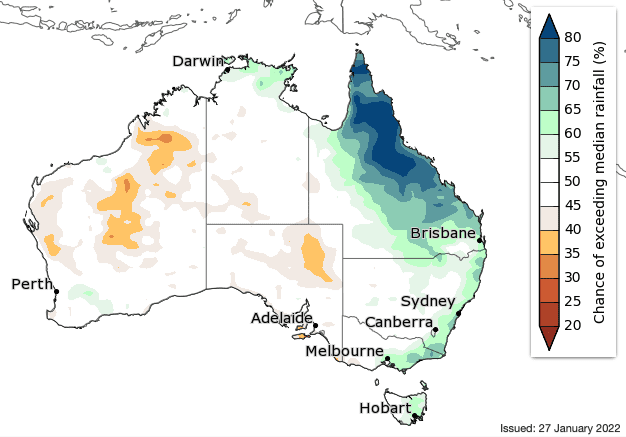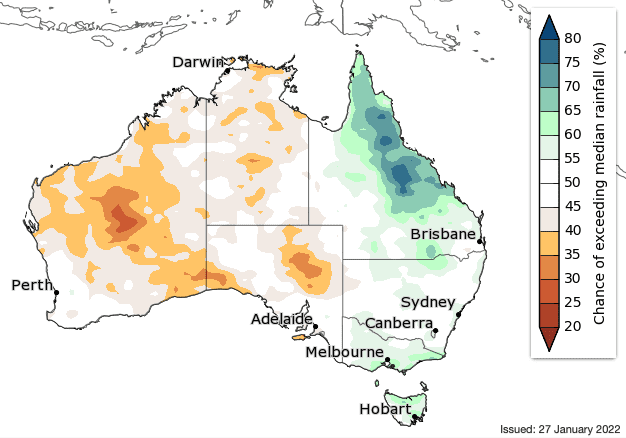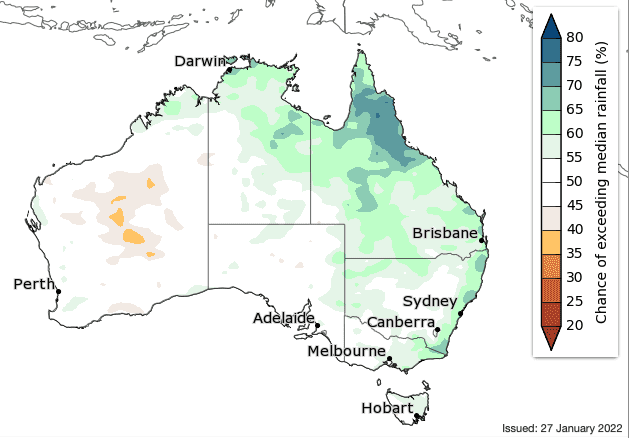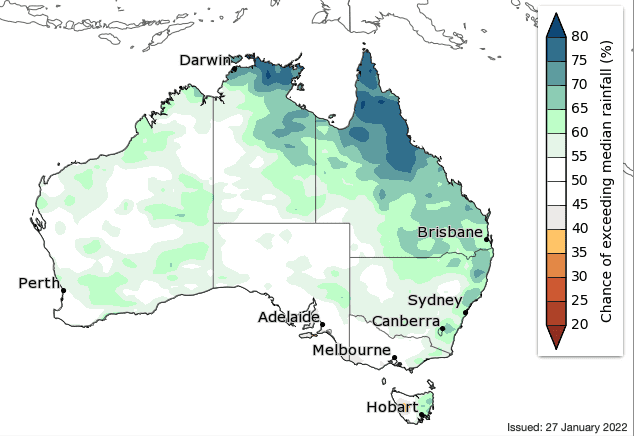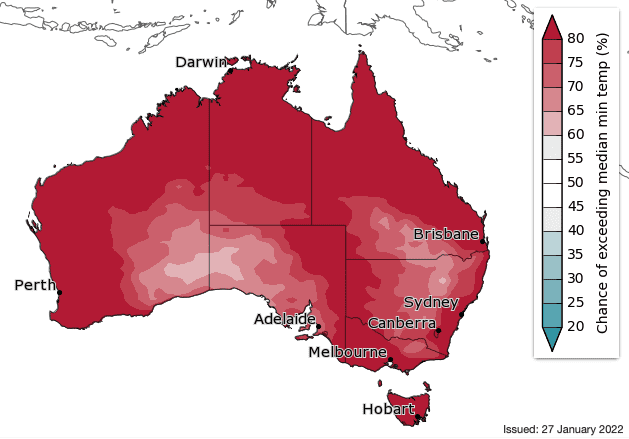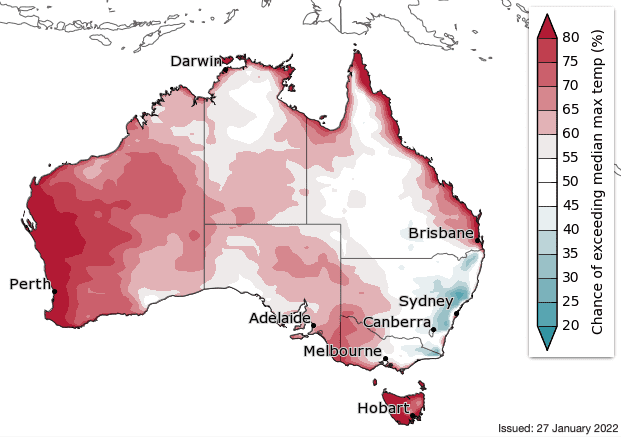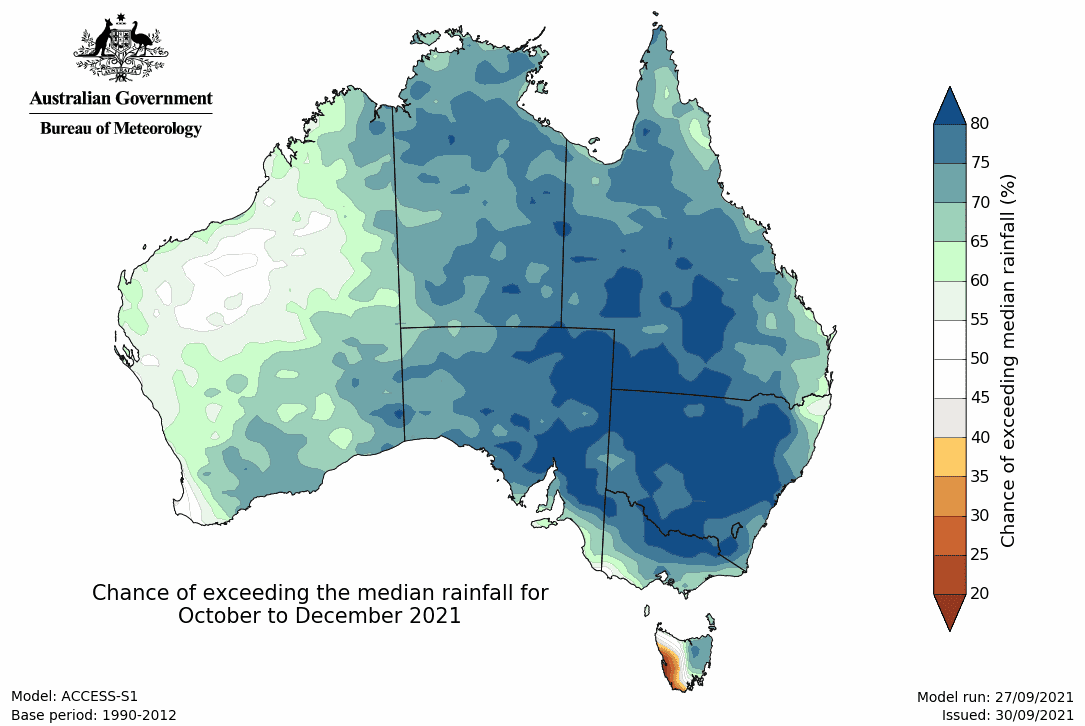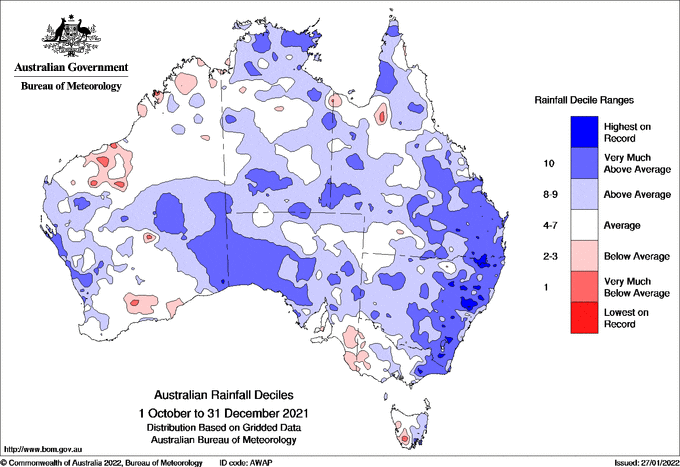Warmer nights for February to April, with warmer days for much of west, south and coastal north-east
February to April maximum temperatures are likely to be above median for WA, the southern NT, SA, western NSW, western Victoria, Tasmania and along the Queensland coastline east of the (greater than 60% chance). Below median temperatures are likely for eastern NSW and far eastern Victoria (less than 40% chance of above median). Elsewhere, there are roughly equal chances of warmer or cooler days (chance of exceeding the median is close to 50%).
There is an increased chance of unusually high maximum temperatures (in the top 20% of historical records) for February to April over much of WA, the central NT, western and central parts of SA, and far western parts of NSW, Victoria and Tasmania (1.5 to more 3.0 times the usual chance), with the highest chances in western WA. In any given outlook period, the chance of unusually high or low maximum temperatures is around 20%. This means that a 40% chance of unusually warm conditions is twice the normal likelihood, while 60% is three times.
Minimum temperatures for February to April are likely to be warmer than median Australia wide (chances are greater than 60%), with most areas very likely (greater than 80% chance).
There is an increased chance of unusually high minimum temperatures (in the top 20% of historical records) for February to April over most of Australia (1.5 to more 4.0 times the usual chance). The highest likelihoods are across the northern parts of the NT and Queensland, and western WA.
Past accuracy for February to April maximum temperatures is high to very high for almost all of Australia. For minimum temperatures, accuracy is high to very high across most of Australia, with moderate to low accuracy in an area inland of central coast Queensland and on WA’s Pilbara coast.

